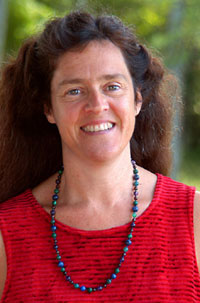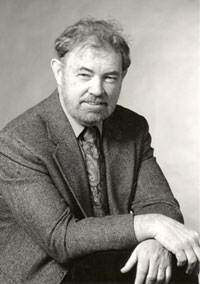

To Protect and Defend: Town Meeting for the 21st Century
Susan Clark On March 1st, Vermonters will come together in town halls, school auditoriums, and churches across the state to pass legislation that will govern their homes for the coming year. Town meeting is a tradition reaching back more than 200 years and yet it is the most progressive political institution for women currently in existence. But this unique experience is under attack from multiple enemies and in danger of slipping away before we fully realize its importance. “The one thing that is most constant in [the history of] our collective state lives is town meeting,” says Frank Bryan, a professor of political science at the University of Vermont who has studied the institution his entire life. “If you put someone from 1810 in a heated car, driving through the hills of East Montpelier, eating a sticky bun and listening to news from Baghdad on the radio – how could that person have any idea what was going on? But when they got to the town meeting and the moderator said ‘all those in favor’ or ‘the residents are hereby warned’, that person would immediately recognize the procedures, the language, the ambiance, and know what was going on.” Bryan is the author of Real Democracy: The New England Town Meeting and How It Works (2003), the definitive work on town meeting and, until now, the only book on the topic. He and co-author Susan Clark of Middlesex recently published a new title, All Those in Favor: Rediscovering the Secrets of Town Meeting (2005), a layperson’s guide to the tradition of town meeting and how-to manual for preserving it intact for future generations. “We wrote this book as a tool for social change,” Clark said. “We want to inspire people not only to attend their town meeting, but also to safeguard it and their local democracy.”  Frank Bryan A Uniquely Equal InstitutionThe only legislative body to achieve gender parity in structure and practice, Vermont’s town meeting holds special significance for women in politics. In a representative sample of 44 town meetings in 2003, forty-eight percent of citizens directly involved in the debate and discussion leading to the passage of the local budget and tax rates were women. In comparison, women represented just 31% of the Vermont House of Representatives and 30% of the Vermont Senate setting budgets in 2003, and just 14% of the members of Congress who fashioned the national budget. In some places, women even represent a majority at town meeting – in one year of Bryan’s and Clark's (?) (or does she mean Bryan's 2003 book?) study there were nineteen such towns, including Belvidere, Bridport, Cambridge, Charlotte, Grafton, Lincoln, Victory, Wills, Westford and Westminster. That has never been true in any state legislature or session of Congress in history, according to All Those in Favor. “No legislative body on the face of the earth has a higher percentage of women in full participation and that is even without full female participation in the officer corps,” Bryan said. The officer corps, meaning moderators and members of the select board, is still predominantly male in many towns, but that too is changing. “You can take the budget apart line by line at Hyde Park if you want to, but by town meeting it’s usually a done deal,” said Senator Susan Bartlett (D-Lamoille). “Women need to be at the table making the budgets beforehand, not just criticizing them at the end.” The statewide average for attendance at town meeting is 20%, with small towns like Belvidere consistently reporting one-third or more of registered voters attending and large towns and cities such as Middlebury closer to 5%. Comparing those numbers to voter turnout in national elections is unfair and inaccurate, according to Bryan. “We can’t get 50% of Americans to the polls for thirty minutes every four years to elect arguably the most powerful person on the planet. Town meeting happens every year, takes several hours (not including lunch), costs many people a day’s pay, yet year after year, one in five Vermonters show up,” he said. The Looming ThreatMore important than the time commitment is the purpose of town meeting – making laws and crafting local policies on matters ranging from budgets to zoning to non-binding resolutions on international issues and everything in between. “Walk into a town meeting and every citizen is a legislator. And every woman at town meeting is immediately getting hands-on experience in local government and that is very empowering,” Clark said. But the future of town meeting as a face-to-face, truly deliberative legislative body is seriously in doubt. As people face ever-increasing demands on their time, many towns have moved to Australian ballots as a matter of efficiency. “They worry about people getting left out and want to make democracy more accessible, but the data just doesn’t hold up,” Clark said. “Our meeting is already very accessible and more quantity is always nice, but the quality of the experience is being lost.” It was the potential move to Australian ballot in Middlesex that first moved Clark to join the fight to preserve town meeting. “I had a gut feeling that it was a bad idea, but didn’t know all the facts and realized that there was no good, basic source of information about town meeting available,” Clark said. The result is All Those in Favor, a slim and reader-friendly volume that combines Bryan’s quantitative analysis of the last thirty years with qualitative data from hundreds of interviews which Clark conducted throughout the state with town clerks, moderators and citizens. Both Clark and Bryan strenuously oppose replacing the deliberative tradition of town meeting with Australian ballot, citing both statistical and anecdotal evidence that it actually decreases participation, as well as the less tangible element of social capital. “In surveys of civility and quality of social interaction, Vermont consistently ranks in the top ten, as do the other four New England states that still use some form of town meeting,” Clark said. “There is a very compelling link between how we engage with each other democratically and how we interact the other 364 days of the year.” Two other common and well-intentioned changes to town meeting have been ultimately destructive, say Bryan and Clark. Many meetings try to divide the agenda, conducting town business in the morning and school business after lunch (or vice versa), but Bryan’s studies demonstrate that this leads to lower attendance, with people coming for only one half of the session. Some towns have also tried scheduling meetings outside of working hours, but this consistently results in fewer people. “We tried a Saturday meeting [in Putney] because people said they couldn’t afford to miss work, but what we found was that more people were willing to give up a Tuesday than a weekend,” said Senator Jeannette White (D-Windham). What’s Next?For towns that may have grown too large for town meeting, ranging from Springfield to South Burlington, the authors suggest considering a representative town meeting system, where members are elected at large from smaller districts. Forty towns in Massachusetts use this system, but Brattleboro remains the only Vermont town to do so. Representative Sarah Edwards (P-Brattleboro) has served as a town meeting representative for several years and supports the idea, but thinks people need to be more involved. “A lot of people criticize the [representative town meeting] system and say they want to be heard directly, I rarely get a call from citizens about town meeting,” she said. Another possibility is to move from a town to a city form of government and create neighborhood districts, each with its own town meeting. It is essential that these neighborhoods have some real power to set policy, according to Bryan. “We need to empower local people to make decisions that matter or they won’t come to town meeting,” he said. |